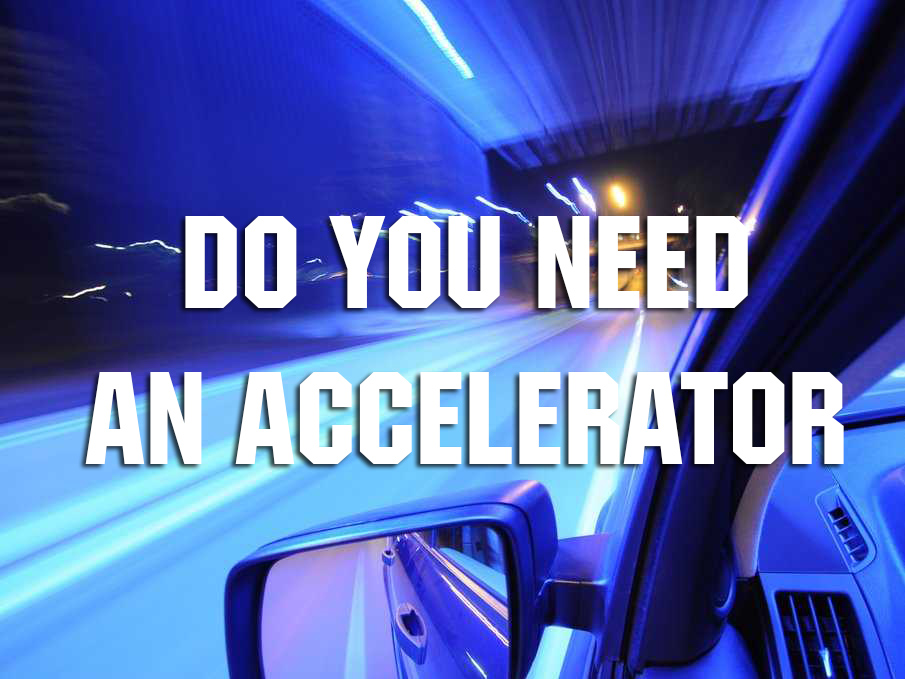“A startup accelerator is built to foster rapid growth of its portfolio companies. It’s a man-made perfect storm of mentorship, access to technology, office space and an innovative community, packed into a short time frame.” Dani Fhankhauser
Not always and acceleration program is the answer.
Is easy to see the funding, the office, the mentorship and the glorious of been accepted like the goal of every startup, but entrepreneurs tend to miss the real goal of every single startup: Business.
The acceleration program must be a step not the goal.
The dream is a global product not a dreamed logo at an accelerator wall.
In that sense, sometimes, the acceleration program can help in the pursuit of happy customers. It takes time to build a valuable company, so it will take awhile before you can see the effect of a program like this on the startup history.
So then, where is the impact?
Before accelerators, there were incubators. The first business incubator was started in 1959 and aimed to be “an institutionalized environment that assists and enables startup companies and business ideas to grow.” The help that they can provide sometimes can be the vitamins to grow faster, the problem is when you expect the program be the oxygen to survive.
The other point is: what accelerator? Since the democratization of the entrepreneurship is most common to see how new acceleration programs are born everywhere, the clue is which one can provide what you need.
In 2005, Paul Graham created Y Combinator, and while the program is loosely based on the incubator model, a few differences stand out. First, the time period is limited — startups come in as classes and graduate together after a few months, while incubators were flexible with how much time each startup might need to get on its feet. Many programs have tried to replicate theY Combinator model on different locations.
The reality is that no two accelerators are the same.
There are vertical focused programs like Nike Accelerator or Disney accelerator and regional programs like Startup Chile or Startup Brazil, the model still being the same with the variants needed by the goals of the program.
If your decision factor is the money, you need to be sure about dilution; if an accelerator takes too much equity, that’s one red flag, this will make it more difficult to raise another round later as you’ll have less equity to offer VCs. At the opposite end, a program that doesn’t take equity might be a bad fit, these programs are looking to promote local business growth rather than generate financial return.
Attending an accelerator requires relocation and full time commitment, if is not on your plans to move another city avoid the long application process and try to look for local programs, angels or incubators.
Before you think in an accelerator, define the startup goals in terms of the team, market, business model, product, customer acquisition strategy and then, only then, think if the next step includes an acceleration program.
“Entering an accelerator without a product is like going to a car race with a bicycle. You have to have something to accelerate.” – somebody
